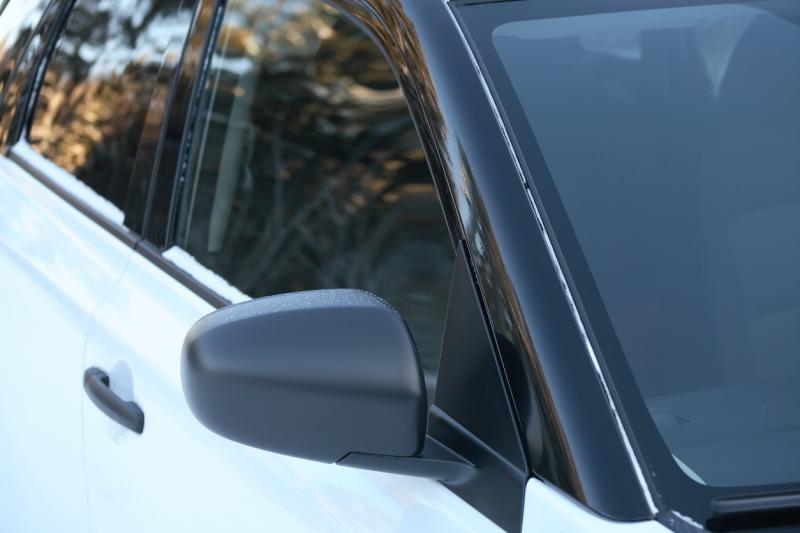Where Is Window Tint Legal in Canada?

While many people believe that window tints are illegal in Canada, the laws vary by province. Each province and territory sets its own rules for window tinting, and it can be tough trying to decide what is best for your car and best for you as a driver.
Before applying the best window tint to your windows, it is best to look at the provincial legislation that applies where you live. Not only will this help you avoid costly fines or other penalties, but you might save yourself from having pieces of tinted plastic pulled out of your windows during routine traffic stops. Let's take a look at the window tint laws across Canada so you know how to choose the best window tint for your vehicle.
Alberta
Alberta vehicle equipment laws prohibit installing window tints on the windshield and front side windows. Any level of darkness can be used on the backside and rear windows. That means Alberta is one of the provinces where you can get the best window tint possible. Only glazing installed by car manufacturers is allowed on windshields, as are clear non-tinted frost shields or window stickers that do not impair the driver's vision.
British Columbia
In British Columbia, you are allowed to tint only the top portion of the windshield up to 7.5 centimetres. Front side windows may not be tinted, but any level of darkness can be used on windows behind the driver. The rear window can be tinted with any level of darkness; however, in BC and most of Canada, your vehicle must have exterior rearview mirrors.

Manitoba
Windshield tint in Manitoba is permitted only on the top portion of the windshield up to 12.7 centimetres, exactly 5 inches. If the tint is in a uniform shade (same darkness over the whole 5″ area), the tint may not block more than 75% of light. In case of a gradual gradient, light transmission may not be reduced below 5% in the top 64mm, and 25% in the area between 64mm and 127mm from the top of the windshield. Front side windows may be tinted but must pass through 50% or more light. Light reflection on front passenger windows may not be over 35%. Backside windows and rear windshield may have any darkness as long as the vehicle has exterior rearview mirrors on the left and right sides.
New Brunswick
In New Brunswick, you can tint your entire windshield, but your window film must block less than 30% of light. Front side windows may also be tinted with the same light transmission level. You can use any level of darkness on your backside windows and rear window. In New Brunswick, the law does not specifically require external rear view mirrors ("side wings"), whereas, in most of Canada's provinces, these are required.
Newfoundland & Labrador
Newfoundland vehicle equipment laws prohibit installing window tints on the windshield and front side windows that do not conform with Motor Vehicle Safety Act. This Act may technically allow up to 70% VLT (block no more than 30% of light), but we do not recommend tinting front side windows or windshields. Backside and rear windows do not have any tinting restrictions. Furthermore, Newfoundland and Labrador laws allow clear non-tinted frost shields or window stickers which do not impair the driver's vision.
Northwest Territories
Northwest Territories Motor Vehicle Act prohibits using any sunscreen material on windshield and passenger front side windows. Laws in NWT province do not specifically restrict tinting back side windows nor the rear window.
Nova Scotia
In Nova Scotia, you may not use any tint on windshield and front side passenger windows. NS law does not restrict tinting back side windows nor the rear window.
Nunavut
Nunavut Motor Vehicle Equipment Regulations prohibit the use of any sunscreen material on windshield and passenger front side windows. Nunavut law does not restrict tinting back side windows nor the rear window.
Prince Edward Island
On Prince Edward Island, you are not permitted to install aftermarket window tint on the windshield or front side windows. Prince Edward Island laws only allow clear non-tinted frost shields or window stickers, which don't impair the driver's vision. There are no tinting restrictions, and any level of darkness can be used on back side windows. You can use any tint percentage on your rear window as well. However, in that case, your car must have left and right exterior rearview mirrors.
Quebec
In Quebec, you can tint only the top portion of the windshield up to 15 centimetres. Front side windows may be tinted but must pass through 70% or more light. There are no tinting restrictions, and any level of darkness can be used on back side windows. You can use any tint percentage on your rear window as well; however, in Quebec, your vehicle must have exterior rearview mirrors.
Saskatchewan
In Saskatchewan, you cannot install any aftermarket window tint on the windshield or the front side windows. There are no window tinting restrictions, and any level of tint can be used on back side windows and rear window.
Yukon
Tinting windows behind the driver may be legal; however, it's not advised due to ambiguous Yukon laws. Yukon province has no relevant regulations which specifically permit or restrict window tinting.
More to Read:
Previous Posts:



